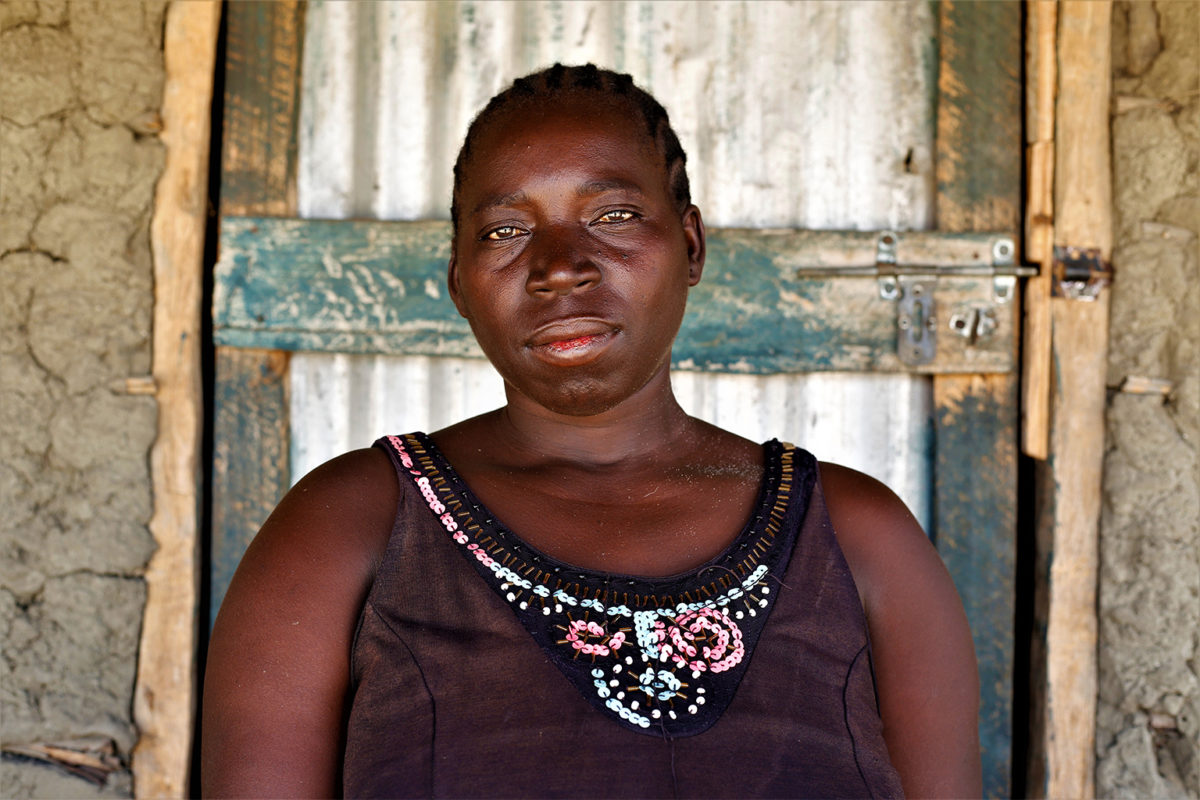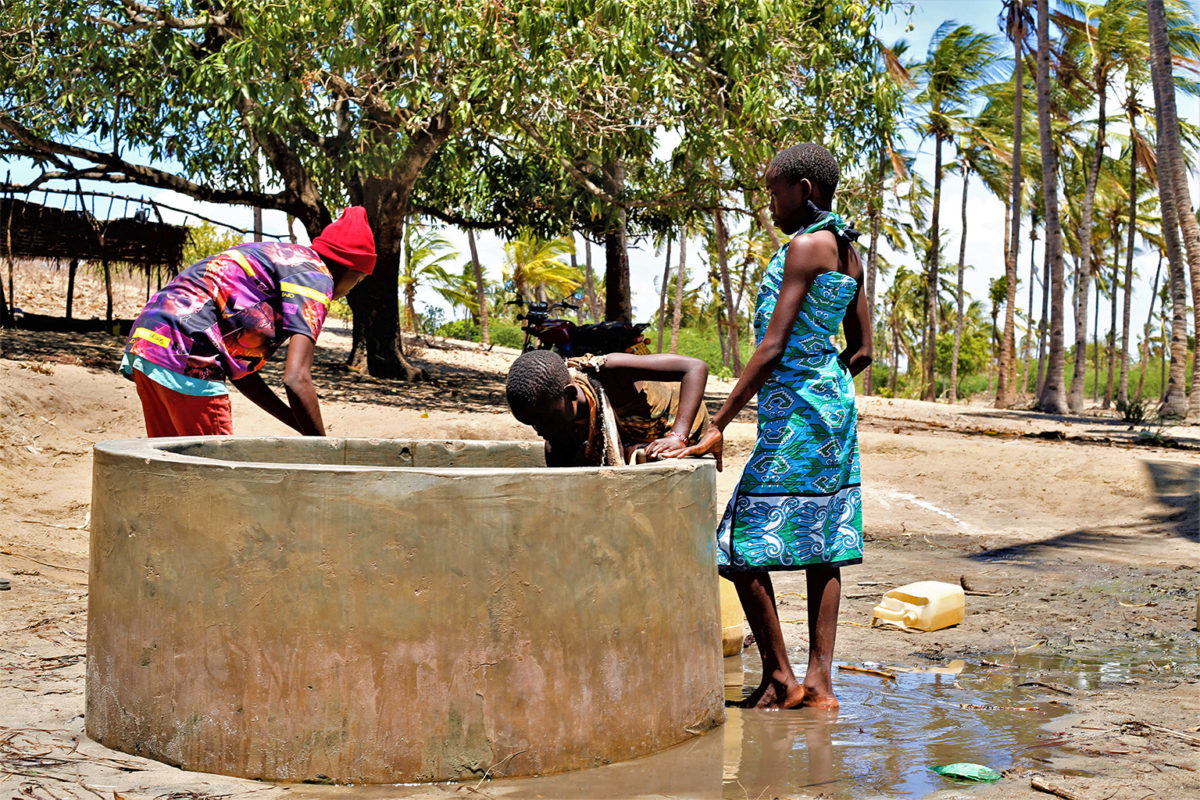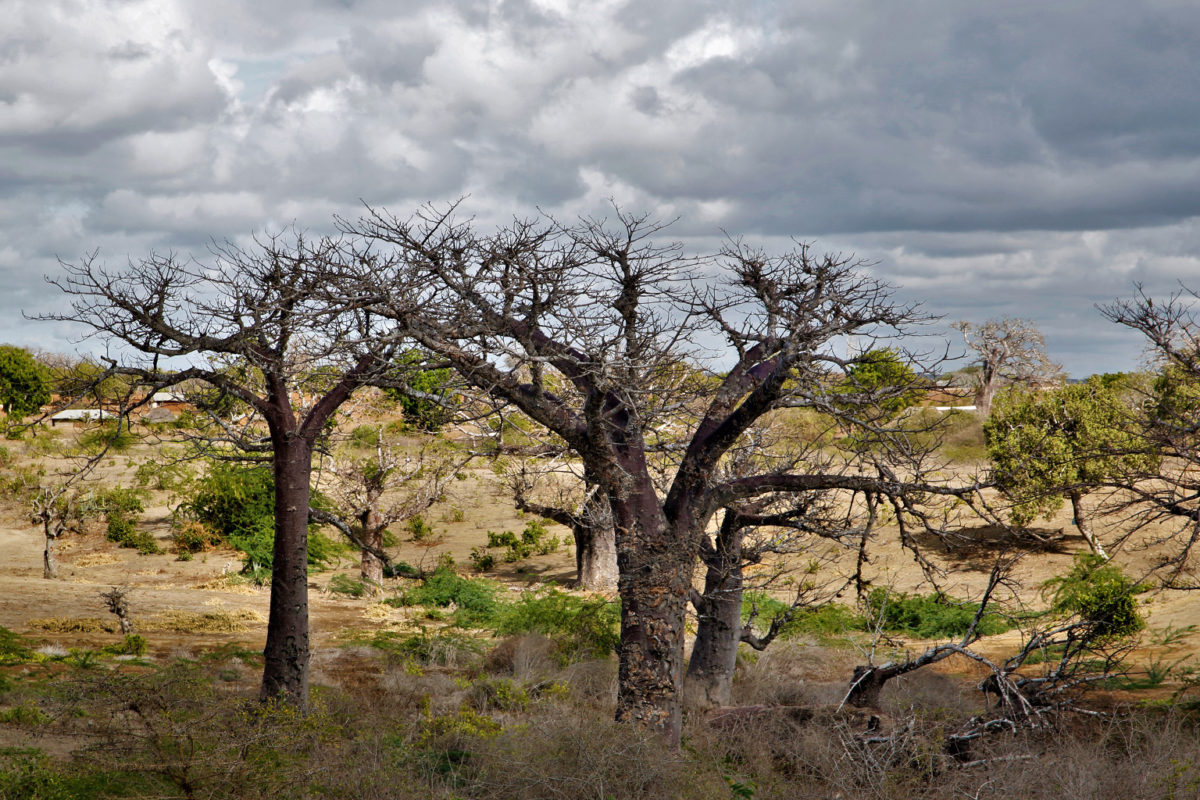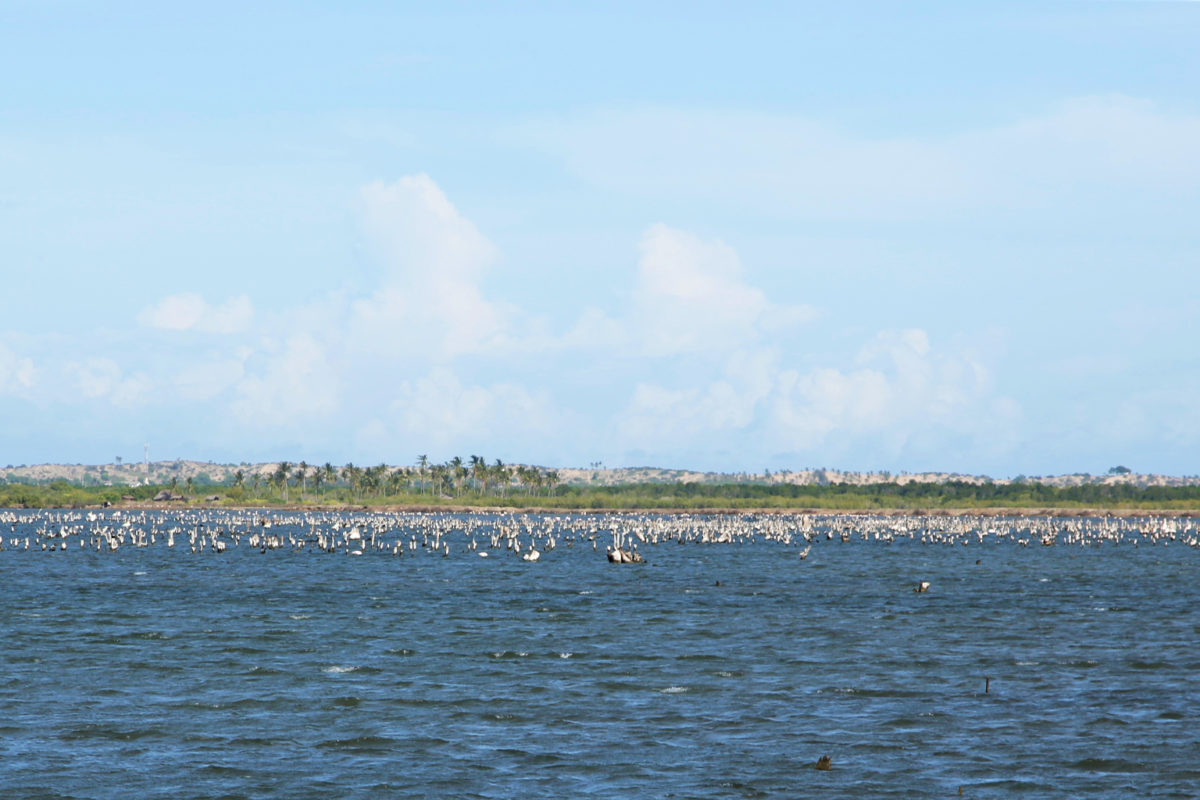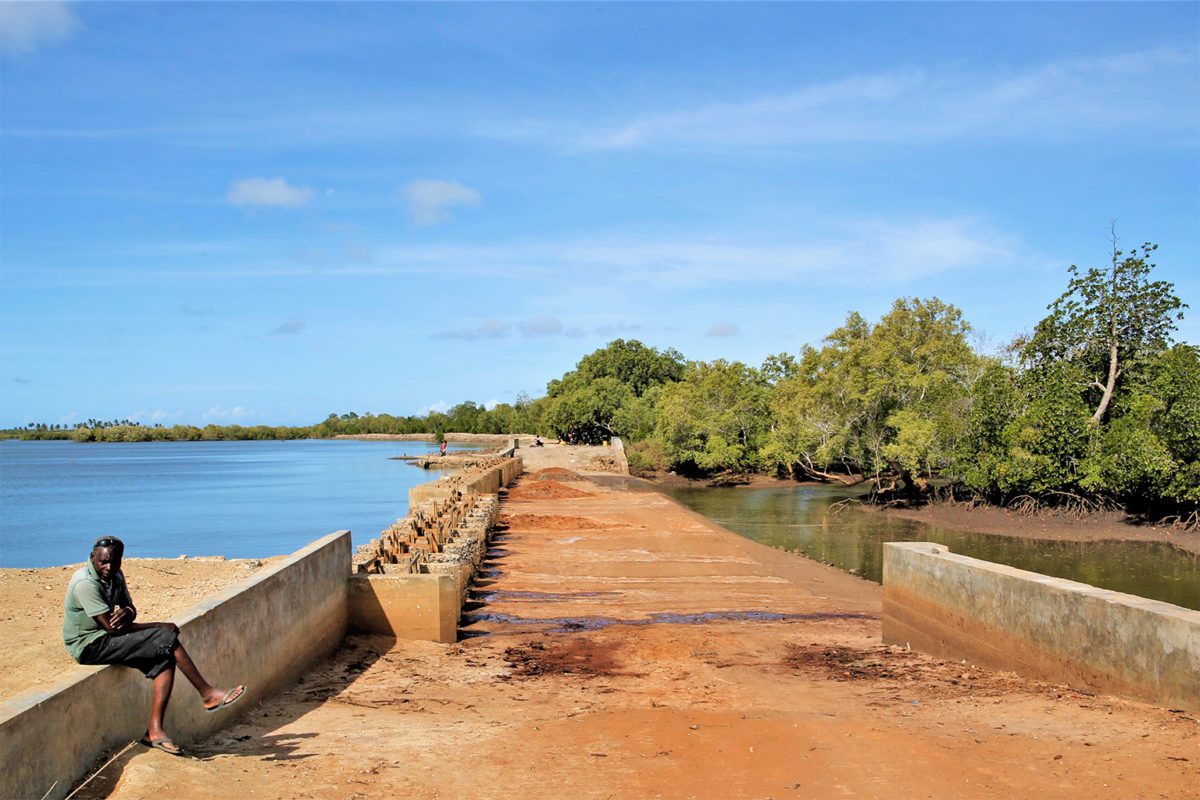- Between 1977 and the 1990s, the Kenyan government allocated thousands of hectares of land to salt mining companies along the country’s north coast.
- People had been living on that land for generations, despite its being officially gazetted as public land by the government.
- Following the allocation of land, local people have complained of harassment and violent evictions by the salt companies, as well as soil and waters rendered too salty to farm, drink, or fish.
- In 2020 groups representing these communities filed a lawsuit against the companies and government that consolidates many complaints and aims to provide recourse for loss of land and livelihoods and damage to the environment. The case is due before a judge in October.
MARERENI, Kenya — It’s mid-morning in April, and Ngombo Tsuma is seated under a lone neem tree by one of his two grass-thatched huts. His wife sits by the door sill of the second hut, plaiting a rope as their daughter and grandchildren watch, chatting. Thirsty and hot, his goats lie in the shade near his feet. Near his chair are empty yellow jerrycans for storing water. He doesn’t have money on this particular day to buy clean drinking water from the shopping center nearby.
A small-scale farmer, Tsuma grows maize, beans and peas and keeps goats and chicken on his 1.6-hectare (4-acre) piece of land. In the past, these crops grew well and he had enough for his family and to sell. But the land has grown saline, Tsuma said, and unfavorable for agriculture; the water from the last borehole he dug near his homestead was too salty to drink. Then this year, the rains arrived late and drought devastated whatever crops and vegetation had survived. The land now lay bare and dry.
To the east of Tsuma’s homestead huge heaps of raw salt rise higher than trees, resembling small snow-covered hills. His neighbor is a salt mining company, Kurawa Industries Limited. The company dug out huge dikes along their common boundary to concentrate seawater behind, and their shoulder serves as a road connecting to villages further north.
Tsuma said some of the land Kurawa Industries occupies, including the stretch of dike near his home, used to be his, and that he’s had to fight to retain what land he has left, spending nights in police custody during the process. Many of his neighbors bowed to pressure and intimidation from the company and left, he said.
Tsuma’s situation isn’t unique, and neither is Kurawa Industries. In Kenya’s salt belt along the country’s north coast, community groups representing local fishers and farmers decry the government’s lease of land to salt mining companies. In addition to losing land, they say environmental destruction by the companies has undermined their livelihoods, a position supported by the Kenya National Commission on Human Rights. They say they now hope a new lawsuit against the companies will give them back their land and offer recourse for damage to the environment.
Life before and after the salt mines’ arrival
Tsuma’s village of Chasimba was once a typical rural village of small-scale farmers and artisanal fishermen. As a young man, Tsuma said, he inherited 9.7 hectares (24 acres) from his father. All was well until the turn of the millennium, when Kurawa Industries arrived in the area and announced that he and many other villagers were all living on its land. Twenty years later, that entire land is now criss-crossed with dikes.
Between 1977 and the 1990s, the Kenyan government allocated at least 5,000 hectares (12,300 acres) to six salt mining companies, including Kurawa Industries. Now, according to the Kenya Association of Manufacturers, the country’s salt industry has the capacity to produce 850,000 metric tons per year, but is currently operating at an average of 60% of that capacity. That leaves Kenya trailing the international leaders, China, the U.S. and India, which produce 58 million, 42 million and 19 million metric tons per year, respectively.
The six companies operating in Kenya’s salt belt practice solar salt production. The process comprises five key steps: capturing seawater via a natural creek during high tide; impounding the brine in reservoirs; concentrating it in condensers; precipitating salt in pans; and piling the resulting salt in heaps.
People had been living on the land the salt mines now occupy for generations, passing down parcels of land within families despite its being officially gazetted as public by the government upon Kenya gaining independence from Britain in 1963. Following the allocation of land, local people have complained of constant harassment and violent evictions by the salt companies, Tsuma among them. Most recently, in 2021, he won a case against Kurawa Industries after the company sued him for trespass and for allegedly setting fire to its machinery.
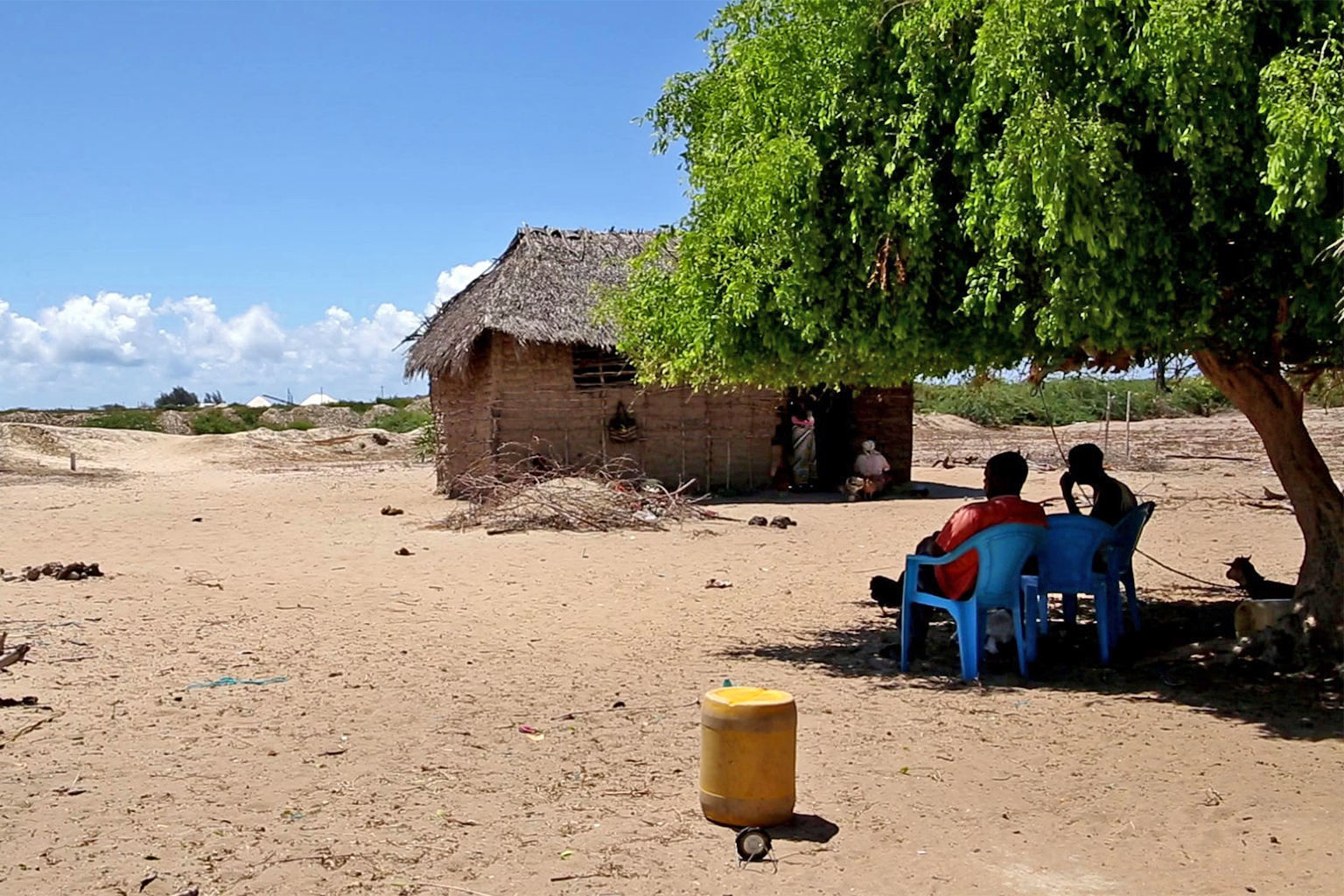
Tsuma said his troubles began 20 years ago, when he and his wife held a wedding ceremony for their eldest son at their home. Later that night, people hired by Kurawa Industries and the police came and razed their five houses. They rebuilt, six houses this time, but a few years later company hands and police returned and razed them again.
“Our neighbors feared for their lives and moved,” Tsuma said. “Some had somewhere else to go. But for me, every time they have burnt my houses, I build houses afresh further away and [Kurawa] pushes the boundary.”
Tsuma recalled being taken into custody at the police station in the salt belt’s main town of Marereni in the early 2000s. He said he was summoned into an office where a Kurawa Industries official sat with the station commander. They showed him an envelope full of money and told him to accept it, sign a paper, and move out of his land. He refused.
However, many others took the money, according to Tsuma and other people Mongabay interviewed for this story. One such letter seen by Mongabay, prepared by a salt mining company to be signed by an individual community member and dated 2001, stated that the community member was a squatter and would accept payment of 4,000 Kenyan shillings (about $50 at the time) in exchange for vacating the land. This amount couldn’t buy even a tenth of a hectare, or a quarter acre, even then.
Now 69, Tsuma looks older. His sons live in Mombasa, more than 170 kilometers (106 miles) away. The eldest, a chef at an Ethiopian restaurant, has brought in building blocks to build a permanent house next to his father’s. “We have nowhere else to call home,” Tsuma said.
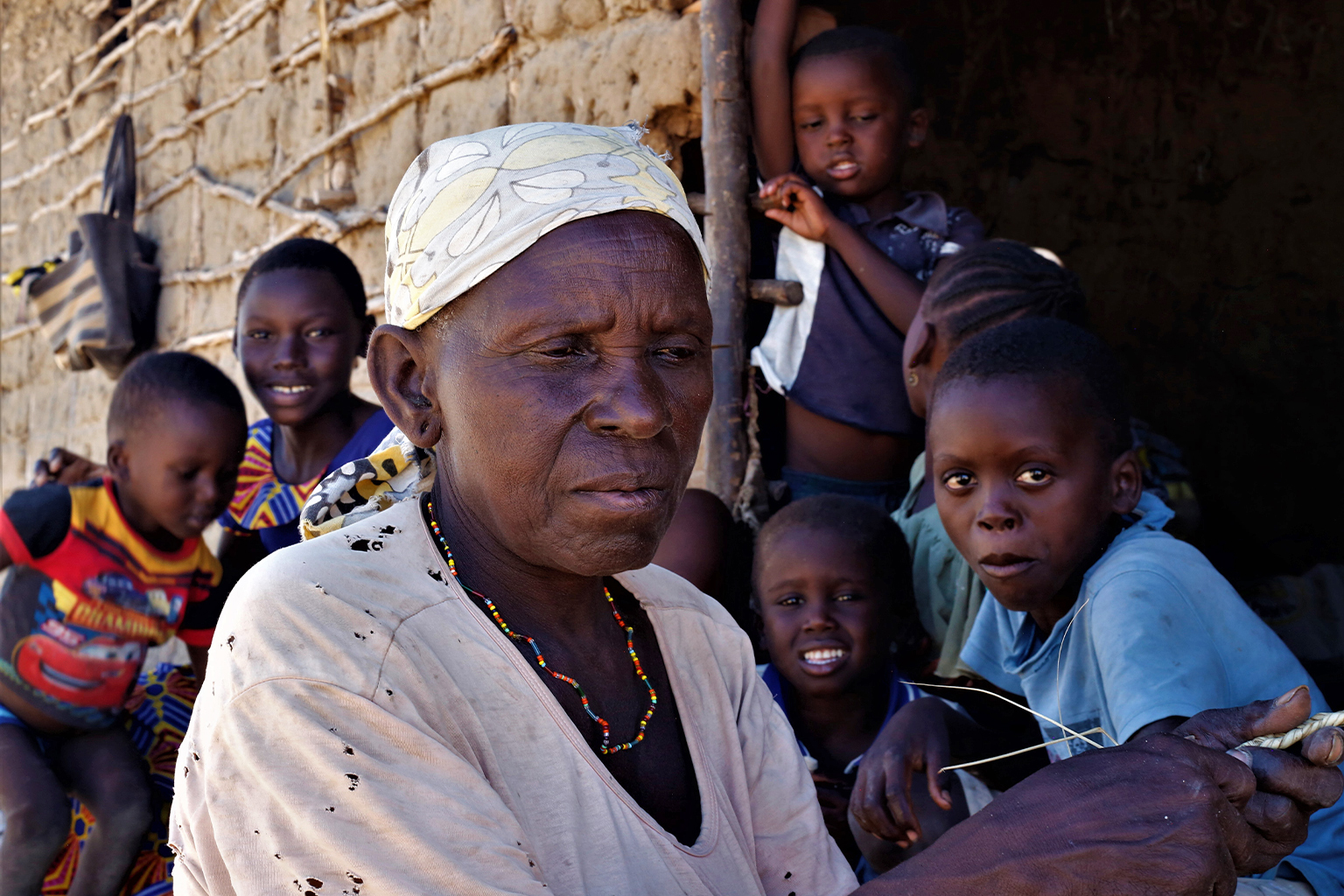
Hope in the form of a lawsuit
Instead of accepting payment to move, Tsuma and others have vowed to fight through the Malindi Rights Forum (MRF). This community-based human and environmental rights organization brings together many smaller groups and has been working against the salt companies since 2012. It does this by educating the community about their rights, helping people file court cases, and finding funding to pursue the cases.
Popo Gona, an MRF official, said the main issue is that the government wrongfully allocated the land to the salt companies. Other issues, Gona said, are that the companies have destroyed the environment, diverted rivers, and contaminated the sea and groundwater.
“They have blocked rivers to create dikes and so the community members have to walk long distances to get fresh water,” he said. “Fish landing sites have been destroyed and this affects the work of fishermen.” A 2019 study the MRF commissioned estimates that more than 4,500 households have been affected by the salt mining operations.
After years of filing individual court cases with mixed results, in 2015 the MRF teamed up with Kituo Cha Sheria, a legal advice center based in Nairobi with an office in Mombasa. In addition to training MRF staff on legal issues, Kituo Cha Sheria consolidated all land and environmental issues related to the salt mining companies into a single public interest litigation that it filed with the Constitutional and Judicial Review Division of the Mombasa High Court, in 2020.
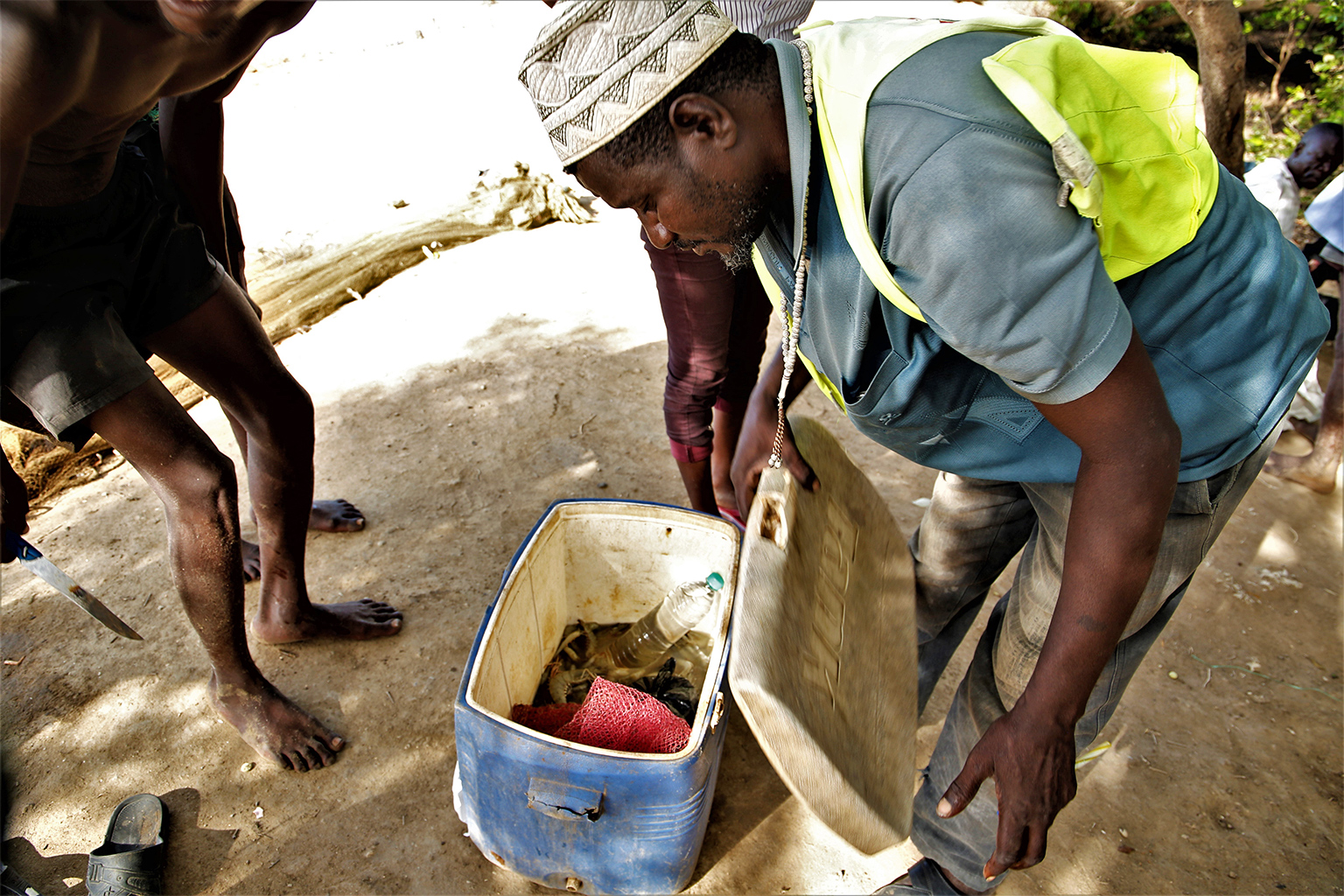
“We found that there were so many cases that were filed either by MRF or by individuals, all looking at the same case — salt mining — and we thought we should file one case that would address this problem once and for all,” said Annette Mbogoh, Kituo Cha Sheria’s executive director.
The case petitions against the unprocedural allocation of land to the salt mining companies. According to Mbogoh, although the government owns the land in Marereni as public land, it erred in allocating the land to the companies because the community was already settled there.
The case seeks to compel the salt companies to revert the land they are not using back to the community. Mbogoh said some of the companies are not using huge tracts of land included in their leases, even though the lease terms require that the land be fully utilized. Additionally, the case seeks to compel the companies to restore the environment and pay reparations to victims of human rights violations.
“One of our prayers is for the restoration of the environment. If they were actually fulfilling environmental mitigation measures then we wouldn’t be here,” Mbogoh said. “We are also requesting NEMA [the National Environmental Management Authority] to come up with environmental standards that are in line with human rights.”
The respondents include the six salt mining companies (Kurawa Industries Limited, Kensalt, Krystalline Salt Limited, Malindi Salt Works, Kemu Salt Packers Production Ltd., and Mombasa Salt Works); NEMA, the government body that supervises and coordinates all matters relating to the environment; and the National Lands Commission (NLC), the government body that oversees land use planning and manages public land.
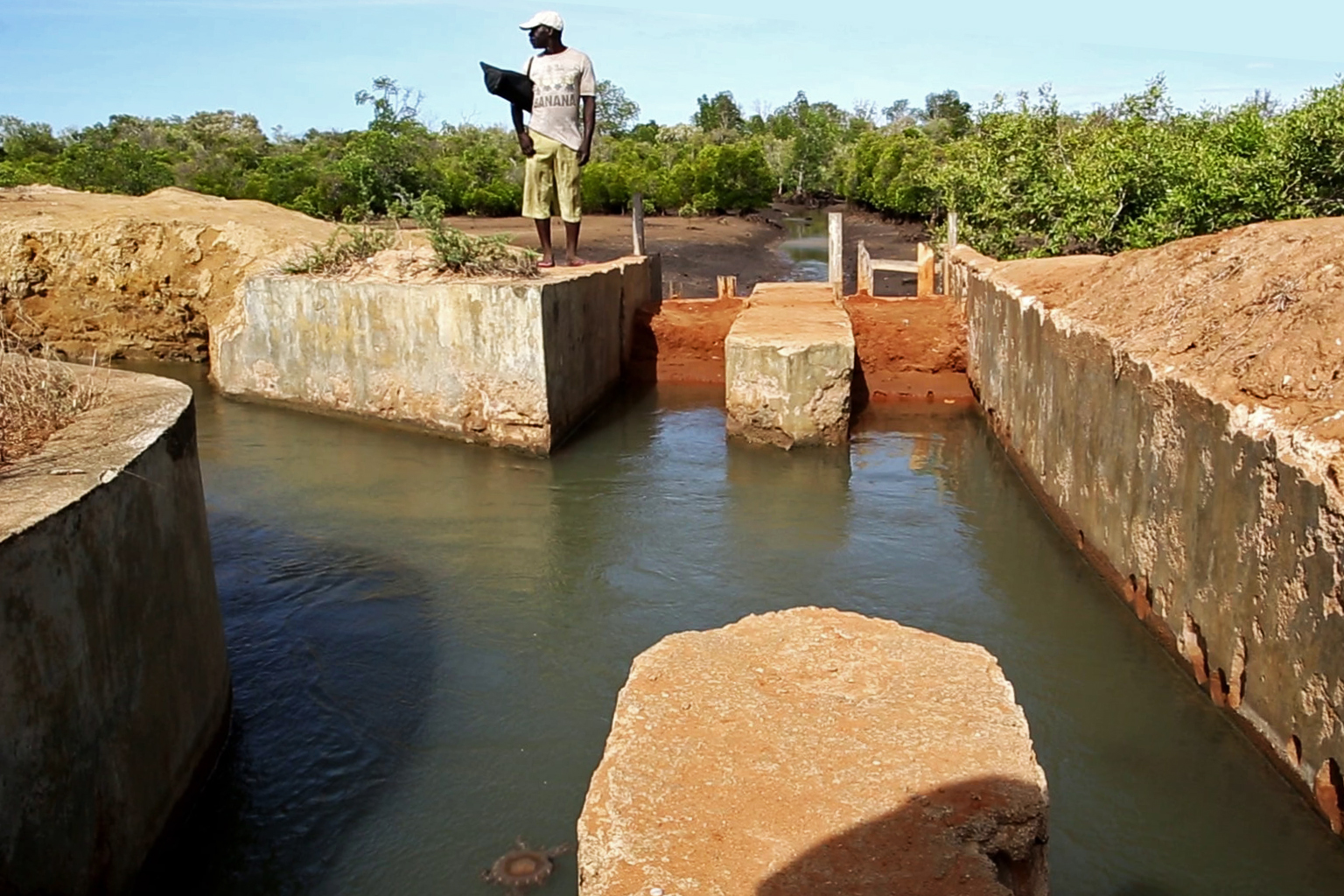
Studies validate the community’s claims. Brine from salt mines, which can have up to 10 times the concentration of seawater, is known to adversely affect groundwater, soil and vegetation. A 2013 study from Kenyatta University researchers found that salt mining in the Marereni area contributed to environmental problems such as “rise in temperatures, deforestation, loss of pasture, salinity of fresh water, air pollution, reduction of rainfall in the area, land degradation and increased dustiness in the area.” The study noted that salinization of surface and groundwater was attributed to deliberate contamination through the dumping of salt and incidental contamination through underground leaching and discharge of hyper-saline water.
The 2019 study commissioned by the MRF, also by Kenyatta University scientists, confirmed the environmental effects of salt mining in Marereni. The study, seen by Mongabay, is not yet public as it is evidence in the ongoing case. According to Mbogoh, the report confirms that the soils and waterbodies on the surface and underground are contaminated, and linked the contamination to the companies’ operations.
The salt mining companies, NEMA and the NLC did not respond to Mongabay’s repeated requests for comment.
Corroboration for complaints outlined in the case go back to 2006, when the KNCHR, the government’s human rights commission, investigated the Marereni land issue and released a report. It said postcolonial governments had perpetuated land injustices against the people of Marereni, the salt companies had breached the terms of their leases, and in instances where compensation had been initiated, the compensation was inadequate. The commission also found that freshwater sources had been contaminated by underground seepages resulting from the salt companies’ actions, causing scarcity of fresh water in the area. The commission conducted an audit of the report in 2017 at the request of the Kenya Association of Manufacturers, and determined that land ownership, environmental contamination and complaints of brutality against community members remained unresolved.
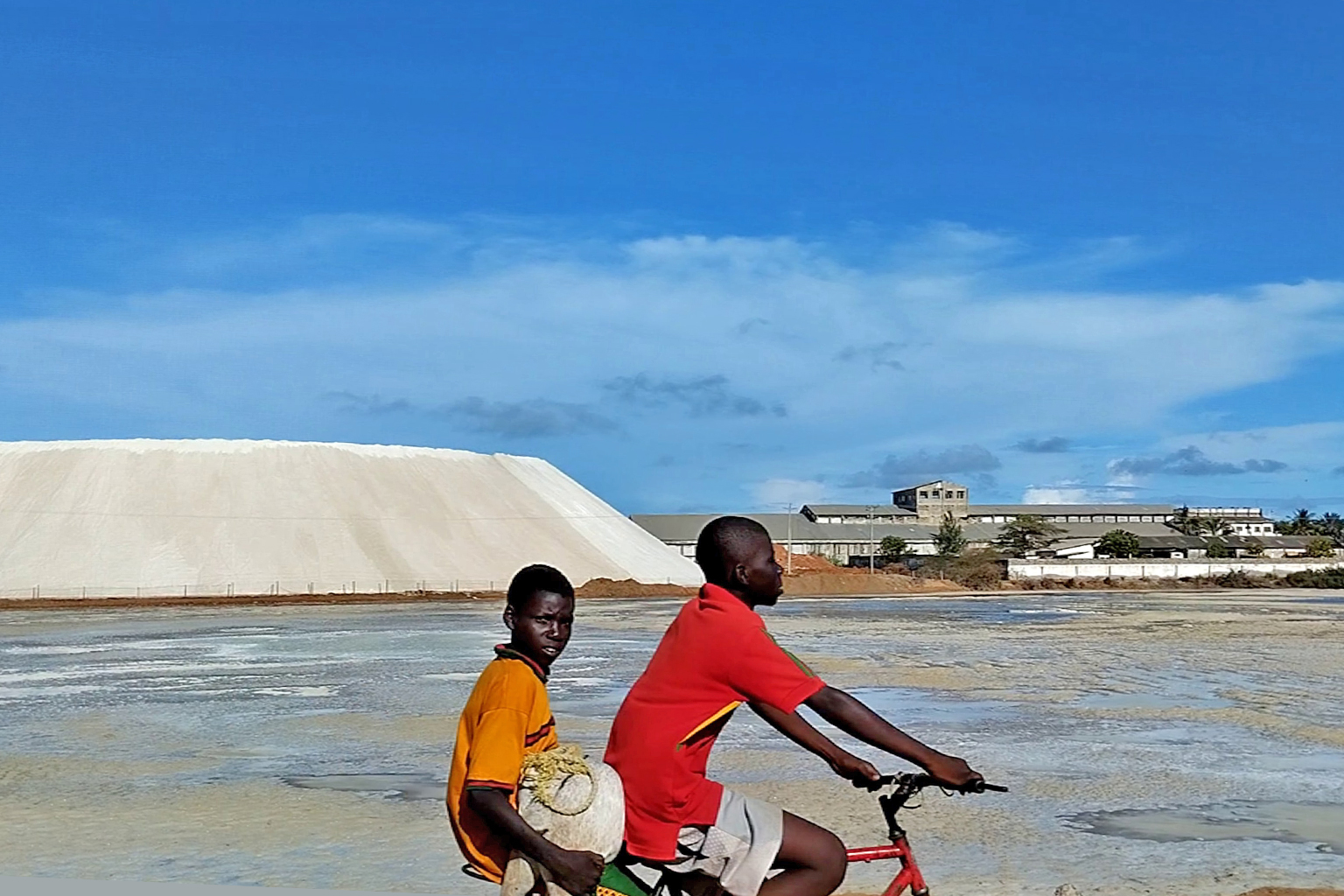
When water turns salty
In Marereni, businessmen sell 20-liter (5-gallon) jerrycans of fresh water for 10 shillings (about 8 U.S. cents) each. They station their trucks in shopping centers. Those who can’t afford it make do with saline water. Tsuma’s family and neighbors get their water from a nearby village whose borehole has turned saline but remains potable. The borehole is on Kahunda Charo’s farm.
Charo, 48, recalled that in the mid-1990s, when she was newly married, the water in the boreholes ran fresh. At the time, she said, the company was just moving in near her home, cutting down trees in preparation to start operations. She was happy to get work at the company when it opened, as one of the women scooping the raw salt and moving it to a central point. She worked there for a few years, she said, but stopped when she started feeling sick.
Her health declining, she stayed home, depending on her farm for a livelihood. Slowly, her palm trees, maize and peas started drying up and failing. The water in the borehole started turning salty. Now she too buys clean water when she has money, she said, but when she doesn’t, she uses the saline water from the borehole.
One afternoon in Gongoni, a beachfront village 29 km (18 mi) south of Marereni, Hafidh Wanje, a fish trader and official of the area’s beach management unit, lay under a mangrove tree by a creek waiting to buy from fishermen. The creek, where fishermen fish, also serves as the inlet where Malindi Salt Works captures seawater and channels it to dikes for concentration. Wanje’s 20-liter portable freezer wasn’t even half full of fish.
“The catch is too little because they poured out the poisonous water just two days ago,” he said. The salt companies mine salt mainly during the dry seasons, from January to April and again from September to October; during these periods, they discharge effluent into the sea as often as weekly, according to Wanje.
A short distance away from Wanje’s spot, Sheikh Kazungu, a farmer from nearby Kinagoni village, stood on a concrete wall alongside a seawater channel. The two men said the channel was a waste outlet from Malindi Salt Works. Kazungu, chairman of the Kikambo Farmers Association, an MRF member organization, said he stopped growing maize on his farm because even when the rains were good, the crops withered. “It is due to the salt in the soil,” he said. “Even if you were to lick your skin right now, it would be salty. How would a maize plant survive?”
Kazungu said farmers in his area have lost crops due to the land growing ever more saline. He attributed this to the companies constructing ever more dikes for concentrating seawater inland, where saline water seepage makes the soil unfavorable for agriculture. “We can’t earn a living from agriculture anymore,” he said.
A judge is scheduled to hear the Marereni petition at Mombasa High Court on Oct. 3. Tsuma, Kazungu and other farmers and fishermen in Marereni will be following along. While the case could take years, they say they believe it will eventually determine whether they continue to live with the particular kind of poverty that arises from loss of land and environmental health, or whether justice will prevail and their livelihoods improve. If the court rules in their favor, the impact will be far-ranging. Apart from the reversion of land and restoration of the environment, the case also seeks the court’s ruling on alleged health impacts to the community, wrongful evictions, violations of salt mine workers’ rights, and harassment by the police.
Banner image: Hafidh Wanje stands near a creek where the fishermen he buys from fish. The creek also serves as the inlet where Malindi Salt Works captures seawater and channels it to dikes for concentration. Image by Anthony Langat for Mongabay.
FEEDBACK: Use this form to send a message to the editor of this post. If you want to post a public comment, you can do that at the bottom of the page.
This story first appeared on Mongabay
South Africa Today – Environment
This article is licensed under a Creative Commons Attribution-NoDerivatives 4.0 International License.
You may republish this article, so long as you credit the authors and Mongabay, and do not change the text. Please include a link back to the original article.












